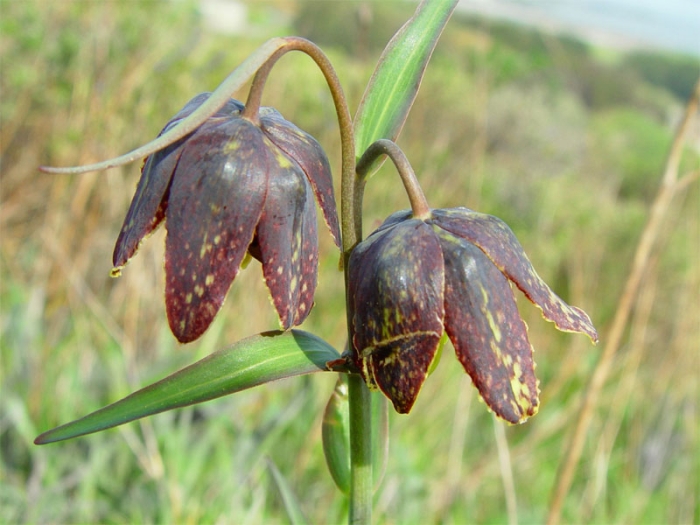Checker Lily
(Fritillaria affinis)
Checker Lily (Fritillaria affinis)
/
/

Franco Folini
CC BY-SA 3.0
Image By:
Franco Folini
Recorded By:
Copyright:
CC BY-SA 3.0
Copyright Notice:
Photo by: Franco Folini | License Type: CC BY-SA 3.0 | License URL: http://creativecommons.org/licenses/by-sa/3.0/ | Uploader: Folini | Publisher: Wikimedia Commons | Title: Fritillaria_affinis_000.jpg | Notes: |





















































Estimated Native Range
Summary
Fritillaria affinis, commonly known as Checker Lily or Chocolate Lily, is a deciduous perennial herb that is native to a variety of habitats including moist meadows, grasslands, open woodlands, and the edges of forests, primarily along the West Coast of the USA and Southwestern Canada. This species is part of the lily family Liliaceae and is known for its distinctive checkered pattern on the flowers. It typically grows from a bulb composed of scales that resemble a cluster of rice grains. The stems can reach heights of 10–120 cm. The unique flowers, which appear in the spring, are nodding and bell-shaped, measuring 1–4 cm in diameter. They exhibit a range of colors from yellowish or greenish brown with extensive yellow mottling to purplish black with minimal mottling, or yellow-green mottled with purple. The leaves are arranged in whorls along the stem.
Checker Lily is valued for its ornamental flowers that add a unique texture and pattern to garden settings. It is often used in naturalized plantings, woodland gardens, and as an underplanting for taller shrubs. It requires well-drained soils and can tolerate dry conditions once established, reflecting its adaptation to summer-dry climates. While some sources suggest it may be challenging to grow, others find it to be one of the more accessible fritillaries for garden cultivation. It generally thrives in part shade to full sun, with medium water requirements, and prefers soils with slow to medium drainage. Despite its beauty, it is not commonly found in cultivation due to its specific growing conditions and the difficulty in transplanting bulbs.CC BY-SA 4.0
Checker Lily is valued for its ornamental flowers that add a unique texture and pattern to garden settings. It is often used in naturalized plantings, woodland gardens, and as an underplanting for taller shrubs. It requires well-drained soils and can tolerate dry conditions once established, reflecting its adaptation to summer-dry climates. While some sources suggest it may be challenging to grow, others find it to be one of the more accessible fritillaries for garden cultivation. It generally thrives in part shade to full sun, with medium water requirements, and prefers soils with slow to medium drainage. Despite its beauty, it is not commonly found in cultivation due to its specific growing conditions and the difficulty in transplanting bulbs.CC BY-SA 4.0
Plant Description
- Plant Type: Herb
- Height: 0.5-4 feet
- Width: 1-2 feet
- Growth Rate: Moderate
- Flower Color: Black, Brown, Cream, Green, Purple, Yellow
- Flowering Season: Spring
- Leaf Retention: Deciduous
Growth Requirements
- Sun: Full Sun, Part Shade
- Water: Medium
- Drainage: Medium, Slow
Common Uses
Bee Garden, Deer Resistant, Drought Tolerant, Edible*Disclaimer: Easyscape's listed plant edibility is for informational use. Always verify the safety and proper identification of any plant before consumption., Low Maintenance, Rabbit Resistant, Showy Flowers
Natural Habitat
Moist meadows, grasslands, open woodlands, and forest edges
Other Names
Common Names: Ojai Fritillary , Chocolate Lily , Missionbells , Fritillaire Chocolat
Scientific Names: Fritillaria affinis , Lilium affine
GBIF Accepted Name: Fritillaria affinis (Schult. & Schult.f.) Sealy